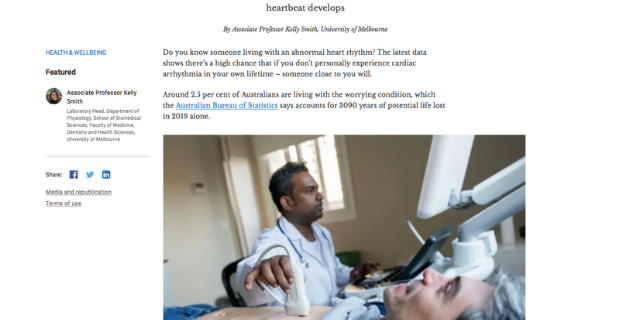What it takes to make a heart beat
Associate Professor Kelly Smith shares her discovery of how a gene involved in cardiac rhythm works – helping to explain how a heartbeat develops.
Do you know someone living with an abnormal heart rhythm? The latest data shows there’s a high chance that if you don’t personally experience cardiac arrhythmia in your own lifetime – someone close to you will.
Around 2.5 per cent of Australians are living with the worrying condition, which the Australian Bureau of Statistics says accounts for 3090 years of potential life lost in 2019 alone.
A person with a healthy heart will have a heart rate of between 60 and 100 beats per minute when resting. Arrhythmias occur when the electrical signals, which control your heartbeats, do not work properly and cause your heart to beat too fast, too slow or irregularly.
The Victor Chang Research Institute reports one in 10 Australians die suddenly due to an abnormal heart rhythm, which occurs most commonly just after a heart attack. But why?

A/Prof Smith's latest research, published in Proceedings of National Academy of Sciences of the United States of America (PNAS), explains how her lab identified a gene required for cardiac rhythm – and how mutation or change of this gene causes cardiac arrhythmia, and eventual lethality. This helps us to understand the fundamentals of what it takes to make a heartbeat.
Until now, no-one has known what this gene does.